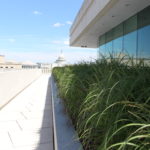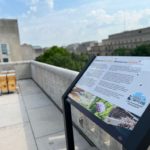When you think about fighting climate change, “buildings” might not be top of mind, but did you know that our building sector is the third-largest source of emissions in Canada? According to the World Green Building Council, the global built environment is responsible for almost 40% of global energy-related carbon emissions.
Since we’re aiming to reach #NetZero by 2050, prioritizing the de-carbonization of our buildings is a key objective. A key pillar of the Canada Green Buildings Strategy is leading by example. Government buildings also need to be decarbonized, which is why we have the Greening Government Strategy. This strategy encompasses retrofitting federal buildings, not only in Canada, but at our Embassies and Consulates throughout the world.
The Embassy of Canada in Washington, D.C. has long been admired for its location and architecture, but the building also reflects Canada’s commitment to environmental sustainability. In June 2019, the Embassy earned the U.S. Green Building Council’s highest distinction — LEED® Platinum certification — for sustainable design and practices.
The Embassy achieved this distinction and, more importantly, reduced its carbon footprint by implementing numerous practical and measurable building improvements. Our electricity use is offset by a solar farm in southern Maryland that is projected to reduce our CO2 emissions by at least 2,500 metric tons. Electric and hybrid vehicles, LED lighting, urban beekeeping, and low water use gardens are more examples of the steps we’re taking to “green” the Embassy and lead by example.
Associated Links:


